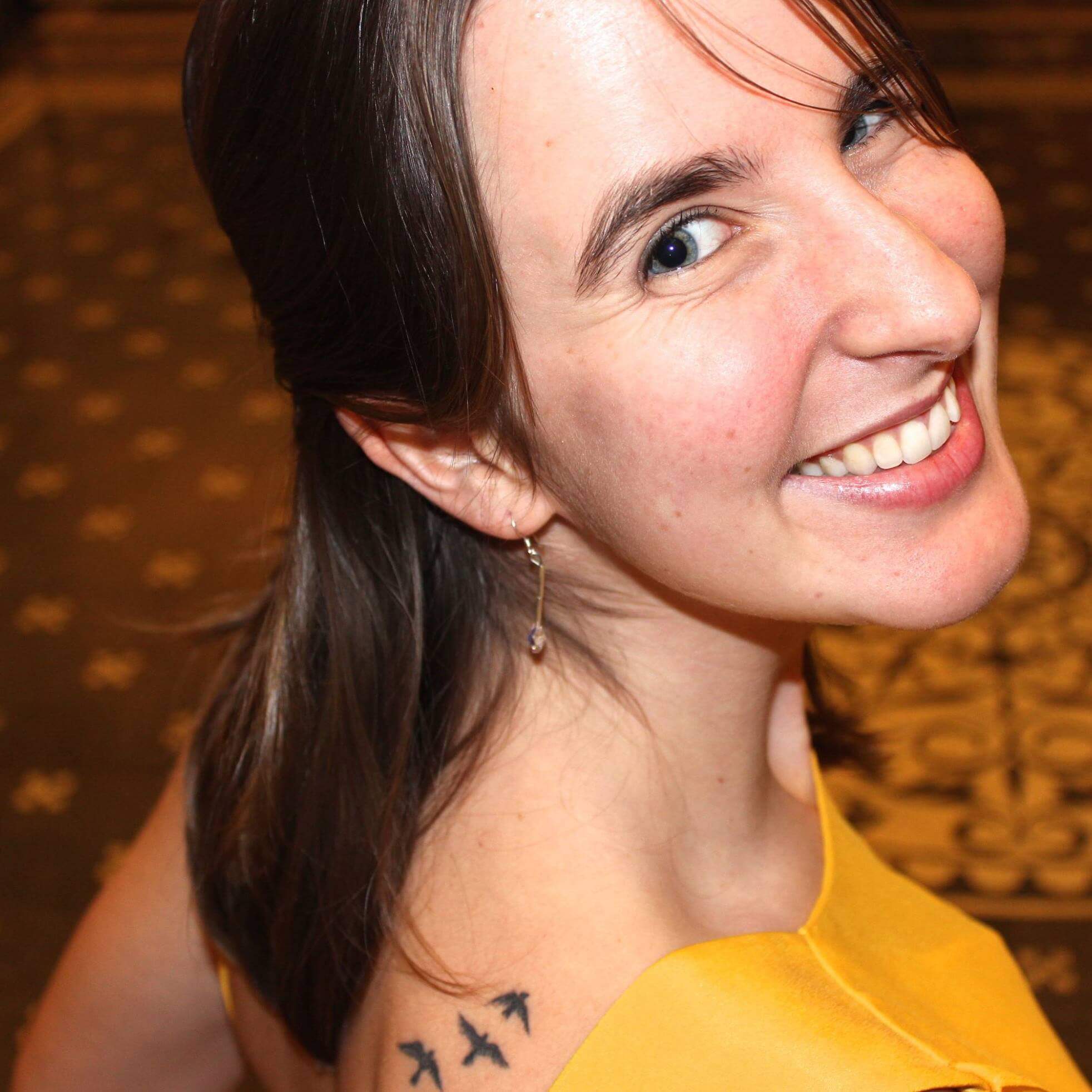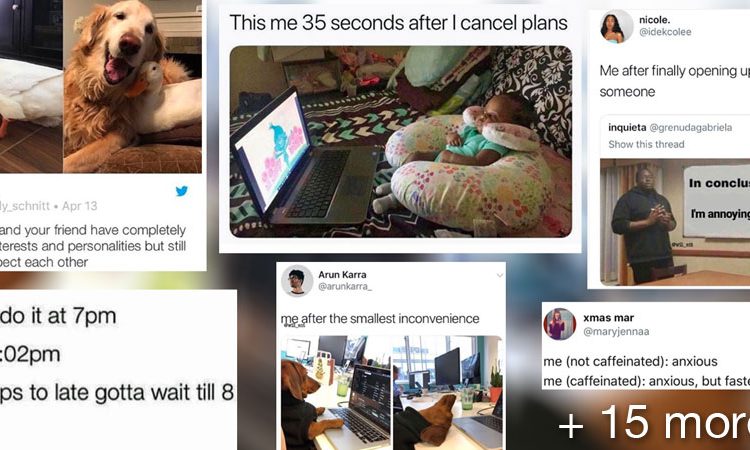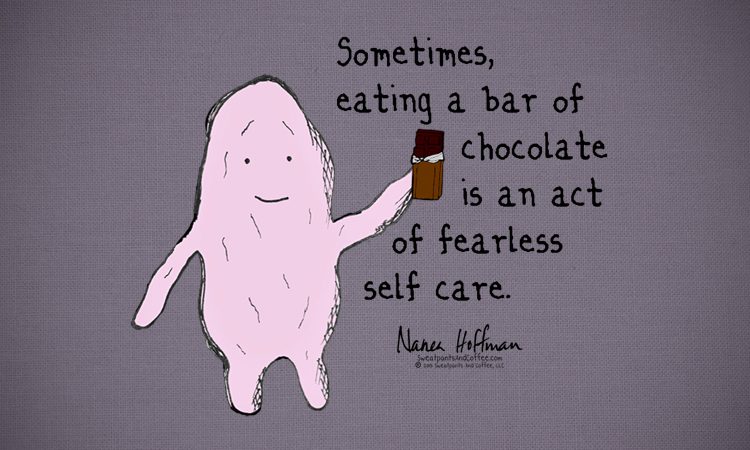I’ve run a blog for the last five years about the intersection of my chronic physical and mental illnesses and my hopes of living a life of joy despite and sometimes even because of them. It started as a Tumblr, and one day, in my ask box, I got a furious message from anonymous saying that it was disrespectful of me to say that I had PTSD at any point in my lifetime because I wasn’t a military veteran. In their mind, my trauma and diagnosis cheapened the lived traumatic experiences of people who have real post-traumatic stress disorder.
My traumas were not of war, the product of an abusive family, or at the hands of a violent romantic partner. They came from friends who continually gaslit me, telling me I wasn’t worth it because I was both too much and not enough. This continued for seven and a half years. There was one key event that put me over the edge. I was left alone in a moment when I thought I was going to die. I spent three years thinking that people didn’t care whether I was dead or alive, but I didn’t know that this was why I was so scared. My thoughts were a cloudy mess; nothing coherent that I could understand. When it hit me one day, I grieved for the person who had lived this way for so long.
I understood, though the message made me sad. I had no idea at age 17, the age that I underwent the crux of the trauma that still haunts me, that PTSD came in such varied forms, and with diverse causes. It affects people who have been in combat and worked other front-line positions, like emergency medical technicians, people who have had significant health scares and faced serious long-term diagnoses, people who have survived sexual assault at any age, and so on. I fit in one of these categories, but my most serious experiences of trauma don’t check any of the boxes. It took me three years to label the terrible things that had happened to me as traumatic.
I spent those years in survival mode. My body and mind hid a lot from me so I’d be able to put one foot in front of the other. But they always lurked beneath the surface, coloring every moment. I never understood why I was so scared. I thought I had been too sensitive, too weak to handle life in all its complexity, but what I needed was help instead of self-loathing. I needed relief for my weary soul.

A picture that I drew my junior year of college when I was starting to see that I had so many secrets I had kept from myself in order to survive.
Up to 7-8% of the United States population will have an active diagnosis of PTSD at some point in their lives, and 8 million adults have PTSD any given year. It manifests as intrusive memories brought on by triggers, avoidance of triggers, changes in physical and emotional reactions to daily life happenings, and negative changes in thinking and mood. I lived this way for three years.

This is a loss line that I made in my training period for a grief organization that provides processing groups for children. Many of the losses have to do with a loss of faith in others because of what I experienced as a teenager and a young adult.
These days, I’m subclinical, but I did a lot of work to get there. I went to (still go to!) therapy, and I still process and dig through old triggers through cognitive behavioral therapy or CBT, which aims to shift thoughts in order to affect emotions and the resulting behaviors. This is my favorite website for searching for individual and/or group therapy – you can sort by your insurance and financial resources and view self-descriptions of the clinicians.
I do the hard labor of forgiveness for those who hurt me and self-forgiveness for the ways that I regret treating myself and others while I was in the darkest depths. I have a bad moment bag that has self-soothing items in it that help me get back to my day. When I can’t self-soothe, I ask for help, knowing that I’m imperfect and I am enough.
I remember that I have no responsibility to be the exact person I was yesterday, and that I’m allowed to grow, shed past behaviors and even what can feel like selves. I learn how to move through pain in new ways. I constantly reframe the way I look at things. It’s an ongoing battle to find beauty in myself and my life where I once only saw suffering and terror.

Kintsukuroi (金繕い, きんつくろい, “golden repair”) is the Japanese art of repairing broken pottery with gold. The philosophy is that cracks, rather than destroying a piece of art, actually make it more beautiful. A day after making the loss line, we were asked to create for ourselves a Kintsukuroi plate that reflected where we were stronger at the broken edges that our losses had brought.
I would never wish the suffering I’ve experienced on my worst enemy. And yet, at the same time, I am very much who I am because of the ways that people treated me and how I’ve learned to treat others and myself. The joy that pervades my life is deep because I’ve fought for it and continue to fight for it. Nothing about this process has been easy. I will always be jumpier than the average person, quicker to look for cracks, readier to lose trust and feel like I need to be my own island rather than accept that I am so loved, so not alone.
So, this is for you if you need it: you are so loved, so not alone. If you’re suffering because of trauma, go get help. Ask those you love to join you in the journey. I’m living proof that this journey can be taken.
“balms”
there are precious moments
when the balm of solidarity
smoothes over the
sounds, sights,
and sensations of
the bombs
that litter my past –the bombs
of words and deeds
that cannot be
unsaid or undonethe tactics
the weapons
the terror –
long-silent
and nearly imperceptible
terror that never
should have been theresometimes feeling
so far out of
my hands
as if it cannot
be my own
even now –and yet
there are balms
that even just in part
or in a barely
perceptible glimmer
shine a light
on the hope found
within piles of rubble
rearranged into
new lifeand
these scars
are healing
bit by bit
mile by mile
and i am far
from the only one
experiencing this rebirth
for it is in our very DNA
to rise againbeloved,
every seven years
each cell in your body
is replaced and renewed
as if to show
that our bodies
could attempt –correction,
were created for –this marvelous act
of defiance and triumph
in the face of all
that would pin us down
rather than prepare our hearts
to beat with the kind
of courage that begins
new eras and turns
over to make space
on blank pages– e.f.a







Karin
Mine is as a result of having Polio at 5 years old. It manifests in not wanting to do with medical or even dental professionals. White coats in particular. It was a cancer scare that helped but not completely erase my fears and apprehensions.
Joni
PTS is something that comes from a traumatic experience, our media has made it out that it has to come from a specific things such as deployment to war zones, this is not the case. I am Veteran and was deployed to both Iraq and Afghanistan, I do suffer from PTSD, but to tear you down saying you couldn’t have the same, that is something that is cold, ignorant and it breaks my heart that you had to hear that with everything else you were already pushing through. I hope you continue to write, and hope all the best for you moving forward.